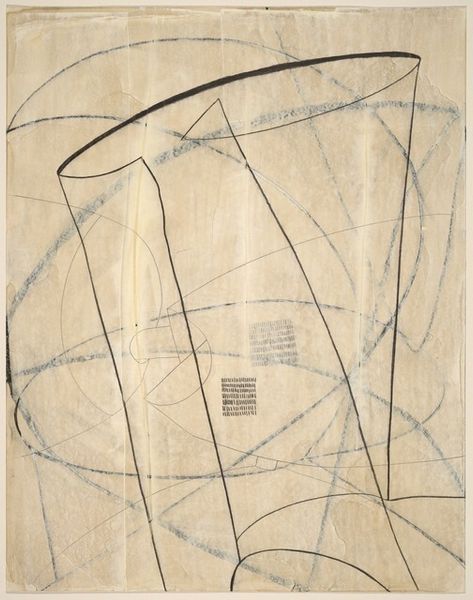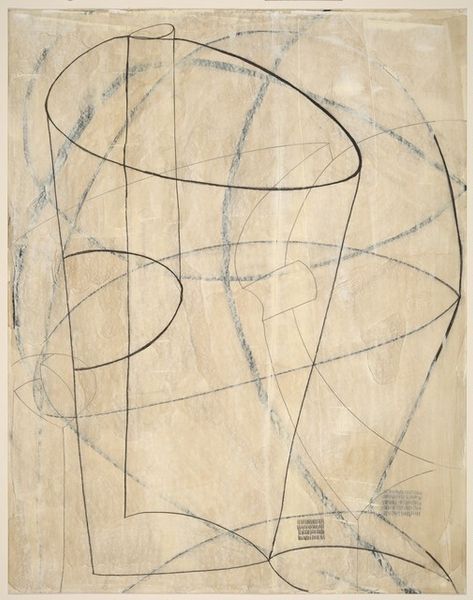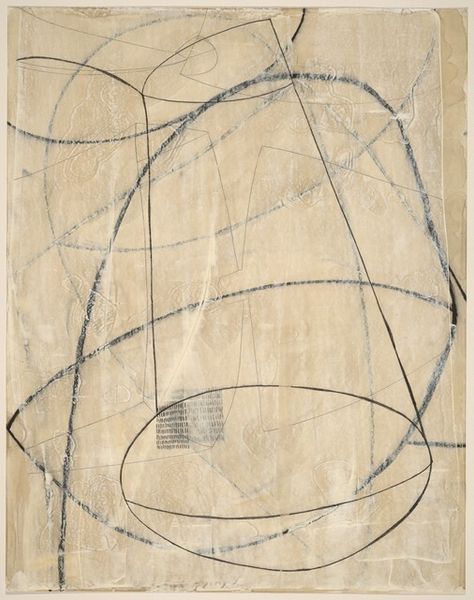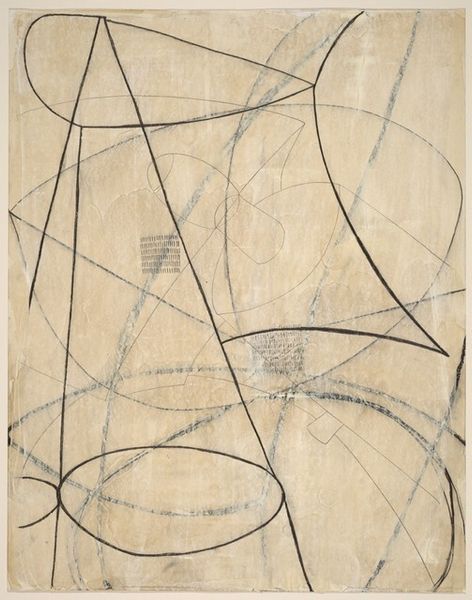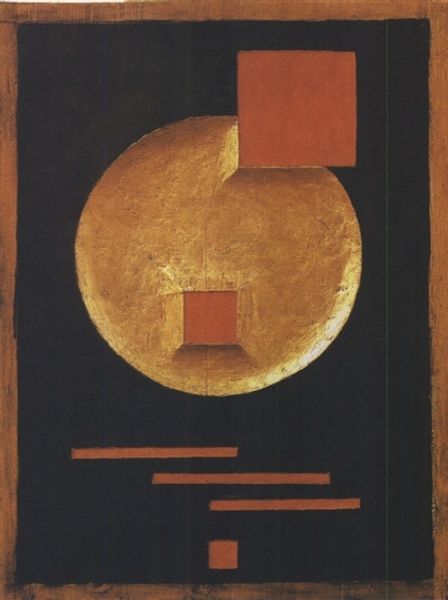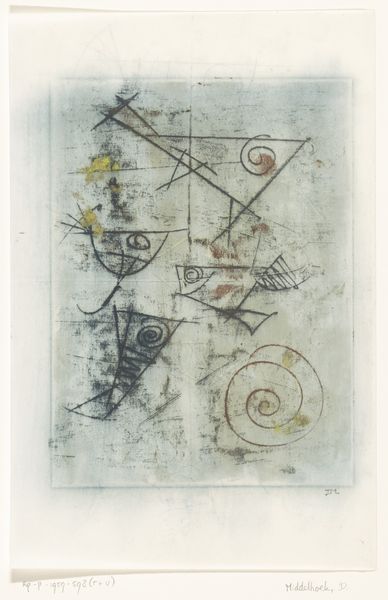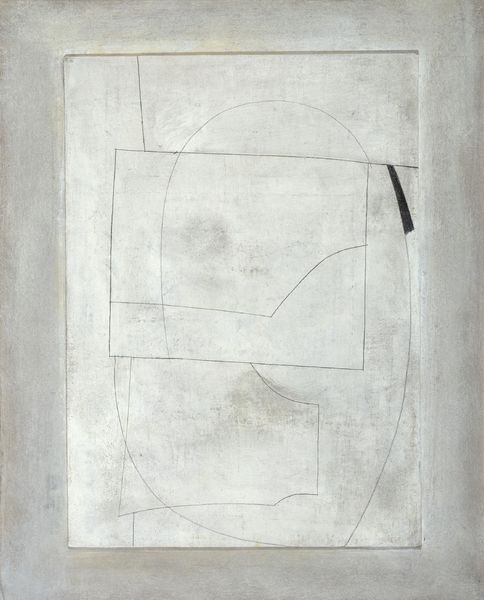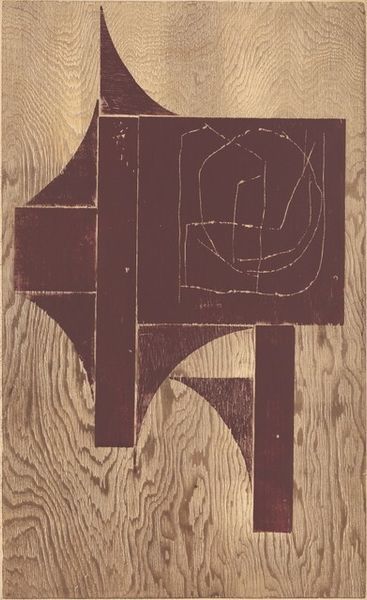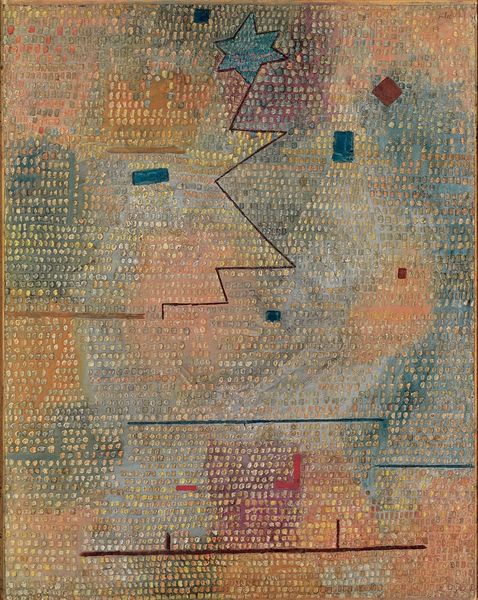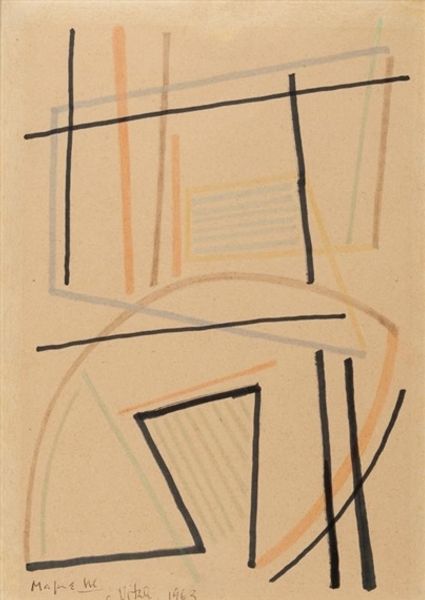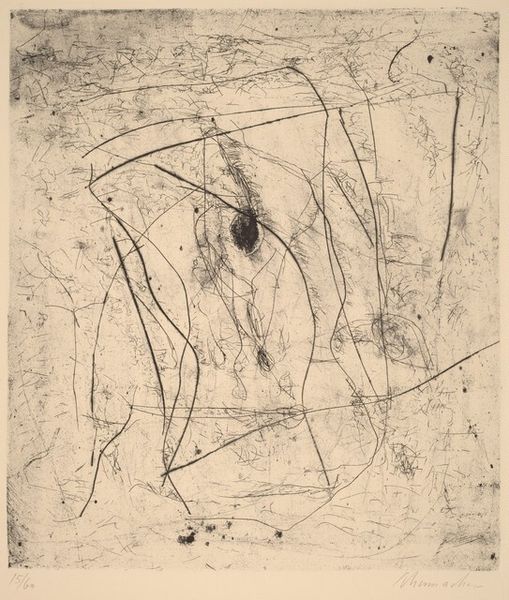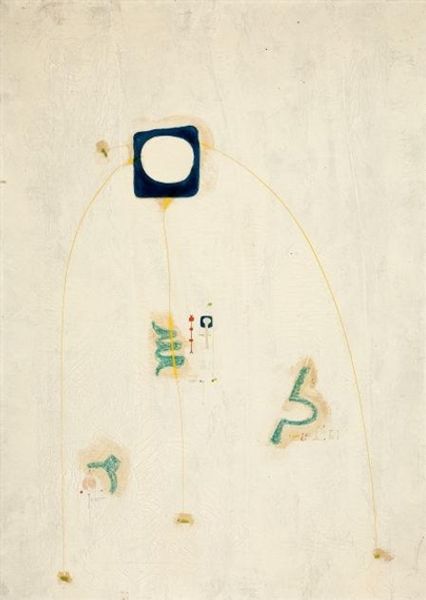
Copyright: Public Domain: Artvee
Curator: Standing before us is Paul Klee's "One Who Understands," crafted in 1934 using watercolors. What’s your immediate impression? Editor: Stark. Almost austere. The limited palette—ochre, white, some neutral ground peeking through—and the stark geometry…it feels strangely calm but also detached. What strikes me is how little is actually there; such a minimalist presence creates an amplified tension. Curator: That detachment resonates, I think. The rudimentary face composed of geometric shapes—a circle, a square, punctuated by those unwavering, simple eyes—speaks to something primal, almost an archetype of the "knower." Consider the psychological weight a simple form like a circle carries—infinity, unity. It contrasts beautifully with the sharp, rational lines forming the face. Editor: Exactly! It's a push and pull. Those linear elements—are they there to dissect the form? Is Klee breaking down the idea of understanding into its fundamental pieces, questioning legibility and rational comprehension in this image? The gaze is confrontational despite the bare form. Curator: Perhaps, yes, disrupting conventional beauty to convey an alternative kind of truth. But consider the socio-political atmosphere of 1934, the rise of authoritarian regimes. Isn't it plausible to see this "knower" as embodying a sort of resilience or even warning? The unwavering gaze suggests profound inner strength and clarity despite, or perhaps because of, chaos. This is also reflected through the continuity of the same geometric elements present in many other of his artworks. Editor: I see what you mean. Maybe I'm too hung up on the pure visual deconstruction, looking only at the structural, and not enough at the broader emotional and historical landscape influencing its conception. However, the very reduced, almost iconic construction remains highly striking to me! Curator: Indeed. By understanding its artistic makeup, its socio-historical context, and the continuity of symbols within Klee's works, this small watercolor opens up many different perspectives. Editor: Right. It is simple, yes, but this stark simplicity creates room for profound thoughts, perhaps more questions than answers.
Comments
No comments
Be the first to comment and join the conversation on the ultimate creative platform.
